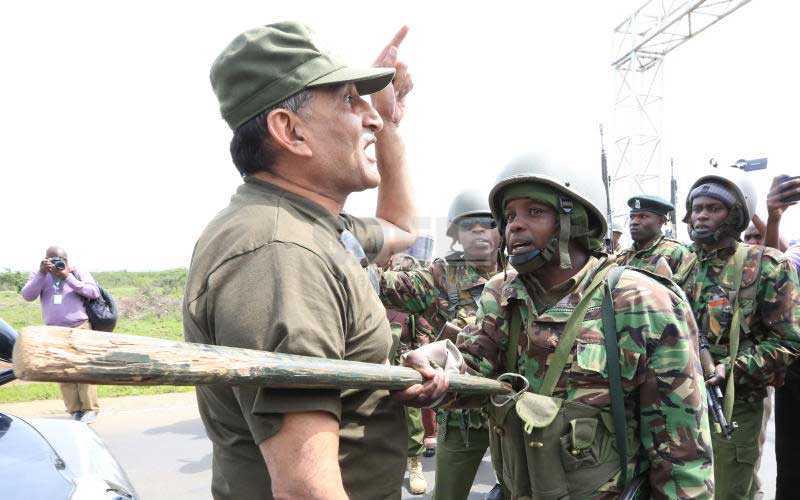The dramatic demolition of an 11-storey building in Mombasa this week has sparked widespread concern and public debate among residents and officials, with developers insisting the ill-fated project met all regulatory requirements.
The building, valued at KSh 350 million, was demolished on Wednesday in a controlled operation led by the Kenya Defence Forces (KDF). It had begun sinking earlier this month, raising fears of a potential disaster. Businessman and politician Irshad Sumra, leading the development consortium, described the event as deeply distressing.
“This is a moment of great distress for all of us involved in the construction and completion of the building,” Sumra said. “We obtained all necessary approvals from Mombasa County, the National Construction Authority (NCA), and the National Environment Management Authority (NEMA).”
Originally approved as a six-storey structure, the developers later sought and received clearance for an additional five floors. Sumra maintained that all additions were lawfully sanctioned and carried out with proper oversight.
“The expansion was lawful and approved,” he said, adding that the building underwent regular inspections by the Mombasa County Department of Planning and Housing throughout its construction.
Developers attributed the building’s structural failure, first detected on 2 April 2025, to an unforeseen geotechnical shift, an unpredictable movement in the earth’s structure, rather than negligence or design flaws.
Despite the developers’ reassurances, the Mombasa County Government has yet to issue an official report on the cause of the failure. The demolition exercise brought parts of Mombasa to a standstill. A 1.2-kilometre evacuation radius was enforced by authorities after a gazette notice deployed KDF troops to secure the operation. Businesses in the Central Business District (CBD), including supermarkets, retail outlets, and the bustling Marikiti market, were shut down as the operation commenced at dawn.
A widespread electricity shutdown was implemented from 7 a.m., compounding the woes of traders who suffered significant losses due to food spoilage and interrupted operations. “We had just restocked our businesses thinking the exercise would last a few hours. But we lost perishables due to the heat and lack of power,” said Salim Mohammed, a local butcher.
Another business owner, Ramadhan Juma, said he closed his retail shop in Mwembe Tayari for fear of looting or unrest. Transport into Mombasa’s CBD was also disrupted, particularly at the Nyali Bridge, where a joint security team, including KDF, police, and county inspectorate officers, barricaded access, stranding thousands of commuters for over four hours.
Governor Abdulswamad Sharrif Nassir, speaking after the successful demolition, commended the collaboration among agencies and stakeholders, confirming that no casualties were reported. He acknowledged that some delays were caused by residents who refused to evacuate.
“Some insisted on staying behind to film the demolition from their windows,” he revealed, noting that windows in two nearby buildings were shattered by the impact of the controlled explosions.
The building, which was scheduled for completion in August 2025, had been financed through a substantial loan. The developers insisted that all phases of construction adhered to the necessary permits and compliance protocols.
“Every stage of this project was undertaken in strict conformity with oversight requirements. What happened was beyond our control,” Sumra reiterated. The collapse and demolition now stand as a stark reminder of the unpredictable risks in high-rise construction, even when proper approvals are in place. As the city awaits the official investigation report, many are left grappling with the losses and broader implications for safety standards and urban planning in Kenya.





